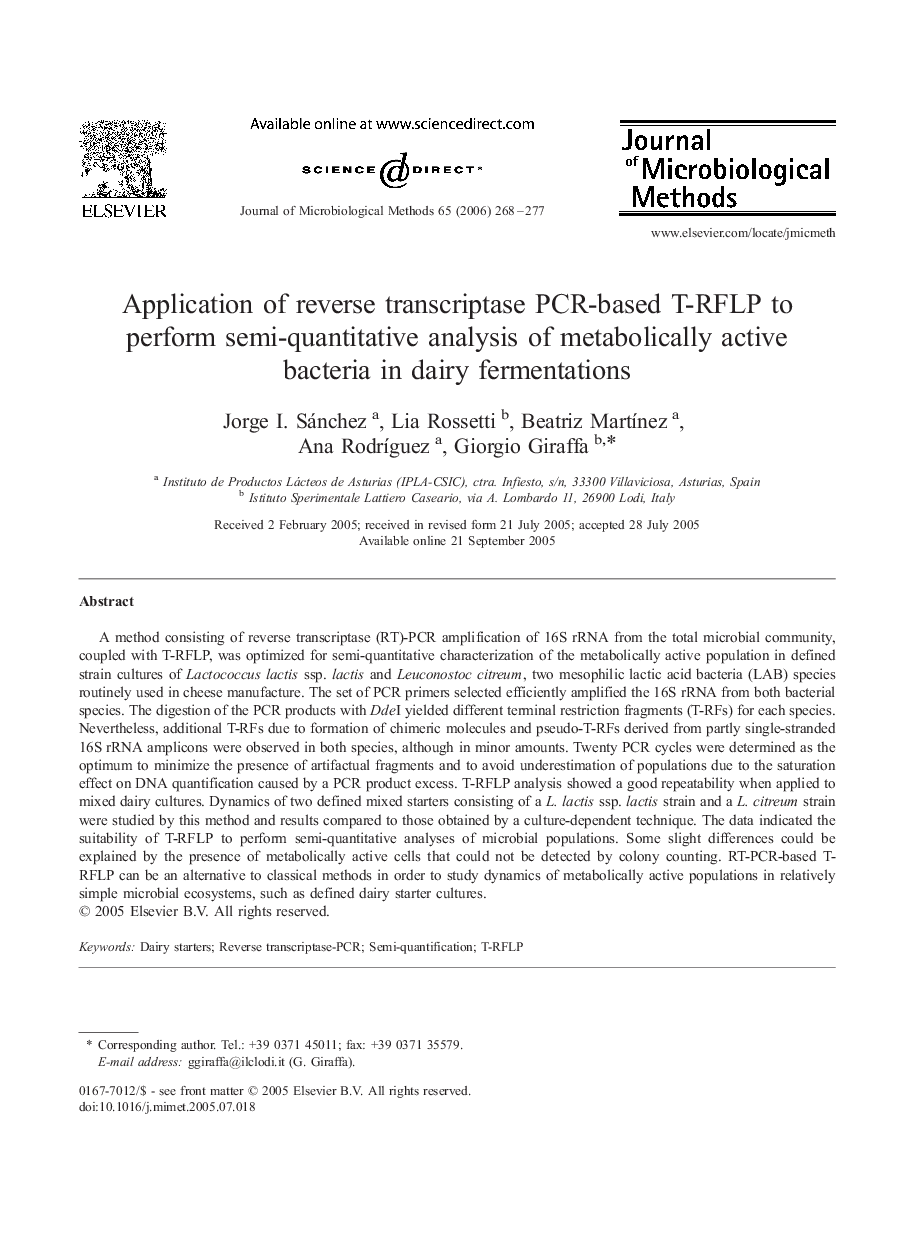| Article ID | Journal | Published Year | Pages | File Type |
|---|---|---|---|---|
| 2091288 | Journal of Microbiological Methods | 2006 | 10 Pages |
A method consisting of reverse transcriptase (RT)-PCR amplification of 16S rRNA from the total microbial community, coupled with T-RFLP, was optimized for semi-quantitative characterization of the metabolically active population in defined strain cultures of Lactococcus lactis ssp. lactis and Leuconostoc citreum, two mesophilic lactic acid bacteria (LAB) species routinely used in cheese manufacture. The set of PCR primers selected efficiently amplified the 16S rRNA from both bacterial species. The digestion of the PCR products with DdeI yielded different terminal restriction fragments (T-RFs) for each species. Nevertheless, additional T-RFs due to formation of chimeric molecules and pseudo-T-RFs derived from partly single-stranded 16S rRNA amplicons were observed in both species, although in minor amounts. Twenty PCR cycles were determined as the optimum to minimize the presence of artifactual fragments and to avoid underestimation of populations due to the saturation effect on DNA quantification caused by a PCR product excess. T-RFLP analysis showed a good repeatability when applied to mixed dairy cultures. Dynamics of two defined mixed starters consisting of a L. lactis ssp. lactis strain and a L. citreum strain were studied by this method and results compared to those obtained by a culture-dependent technique. The data indicated the suitability of T-RFLP to perform semi-quantitative analyses of microbial populations. Some slight differences could be explained by the presence of metabolically active cells that could not be detected by colony counting. RT-PCR-based T-RFLP can be an alternative to classical methods in order to study dynamics of metabolically active populations in relatively simple microbial ecosystems, such as defined dairy starter cultures.
